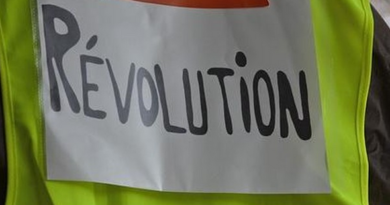The Fight Against Terrorism: Where Do We Stand Three Years After the Brussels Attacks?
On the morning of 22 March 2016, two bombs blasted out the departures hall of Zaventem airport in Brussels; the same morning another bomb went off at Maelbeek metro station in the European quarter. Thirty-two people lost their lives, several dozens were wounded, burned, scarred forever. The shapeless ghost of terror would cast a shadow over the lives of people in Brussels, and in Europe at large.
Three years later, a right-wing extremist opened fire at two different mosques in Christchurch, New Zealand, killing 50 people, and injuring several others. Nearly 20 minutes of this heinous act were broadcasted via social media. After the shooter was caught, the police affirmed that he was on his way to a third location. News of the terrorist attack spread around the globe like fire. The world was in shock. How can our societies fight against terrorism in 2019?
On Wednesday March 20th, the European Foundation for Democracy and the European Policy Centre organised the third annual conference on the fight against terrorism tree years after the Brussels attacks.
In the Felicien Cattier hall of the Fondation Universitaire, European leaders and experts gathered to discuss the current methods used in the fight against terrorism, its multiple challenges and the strategies to prevent radicalisation, as well as the implications of this lurking menace coming from the outside, and from the inside in the form of populist movements.
“With every terrorist attack, populist movements have used the tragedies as a tool,” said Herman Van Rompuy, President of the European Policy Centre. “Populist movements try to find ways to link these attacks with migration.”

Van Rompuy went on to say that tackling the wide spread of “radicalising content online” was crucial and at the top of the political agenda in Europe. Building a “counter-narrative is essential” to avoid stigmatising vulnerable communities, which can fuel polarisation in society and in turn, stoke the fire of radical ideologies and violent extremism.
“There is no silver bullet” to address this issue, Van Rompuy concluded. Collaboration at the local and international levels is needed to effectively address the threats posed by terrorism.
Roberta Bonazzi, President of the European Foundation for Democracy, reflected on some of the drivers that lead to violent extremism, and focused particularly on ideology. “Radical ideologies play a key role in brainwashing individuals,” Bonazzi said. “European governments need to devote more resources to radicalisation prevention efforts.”

Dimitris Avramopoulos, EU Commissioner for Migration, Home Affairs, and Citizenship, defined terrorism as “polymorphous, a non-abating threat” that had to be fought within Europe’s borders and beyond. He insisted on the need to address terrorist-related content shared on the internet. “If a video is available 24 hours after the attack, we have a serious problem,” he said. The Internet is the “most important battleground” as that’s how terrorists get trained, radicalised, and glorified when they do what they do.
He concluded by stating that Europe can only defeat terrorism “together, united, and with trust.” International partners are key, and civil society organisations need to be engaged with great care to avoid the support of ideology-driven groups.
Belgium’s Minister of Justice, Koen Geens, spoke about the sharing of security-related information among countries, and stressed the importance of being careful not to “marginalise people” based on this information. He noted the complex task of handling the balance between state and religious life in the country. He also talked about the importance of developing a version of “European Islam”, which is anchored in European values. Foreign influence has in the past diverged into potential forms of extremism.
Muriel Domenach, Secretary-General of the Inter-ministerial committee for the prevention of delinquency and radicalisation (CIPDR) in France, spoke about the crucial role civil society has in the fight against terrorism. When a message is relayed to the public by an artist it has “a much larger and powerful impact” than if it comes from the state, she said.
The final panel discussion included contributions on countering violent extremism (CVE) by Jessika Soors, Head of Service CVE and De-radicalisation, City of Vilvoorde, and Hadelin Feront, Head of the CVE Unit, City of Brussels, both of whom gave concrete examples of what both cities have been applying to prevent violent extremism.
“A multi-agency approach is needed,” said Soors, pointing out that a balance had to be struck between social and security partners, otherwise social partners could see themselves as being “instrumentalised” by the security agencies.
Feront noted that extreme political views are rising to prominent positions of power in present-day Europe and the world, which in turn, could lead to the “proliferation of violence.” Polarisation creates a more unstable society.
He ended his intervention by recalling the need for a holistic approach where firm security measures are coupled with support towards vulnerable communities and the social partners in the field, the ones society relies on as frontline practitioners.



